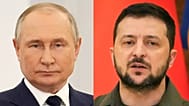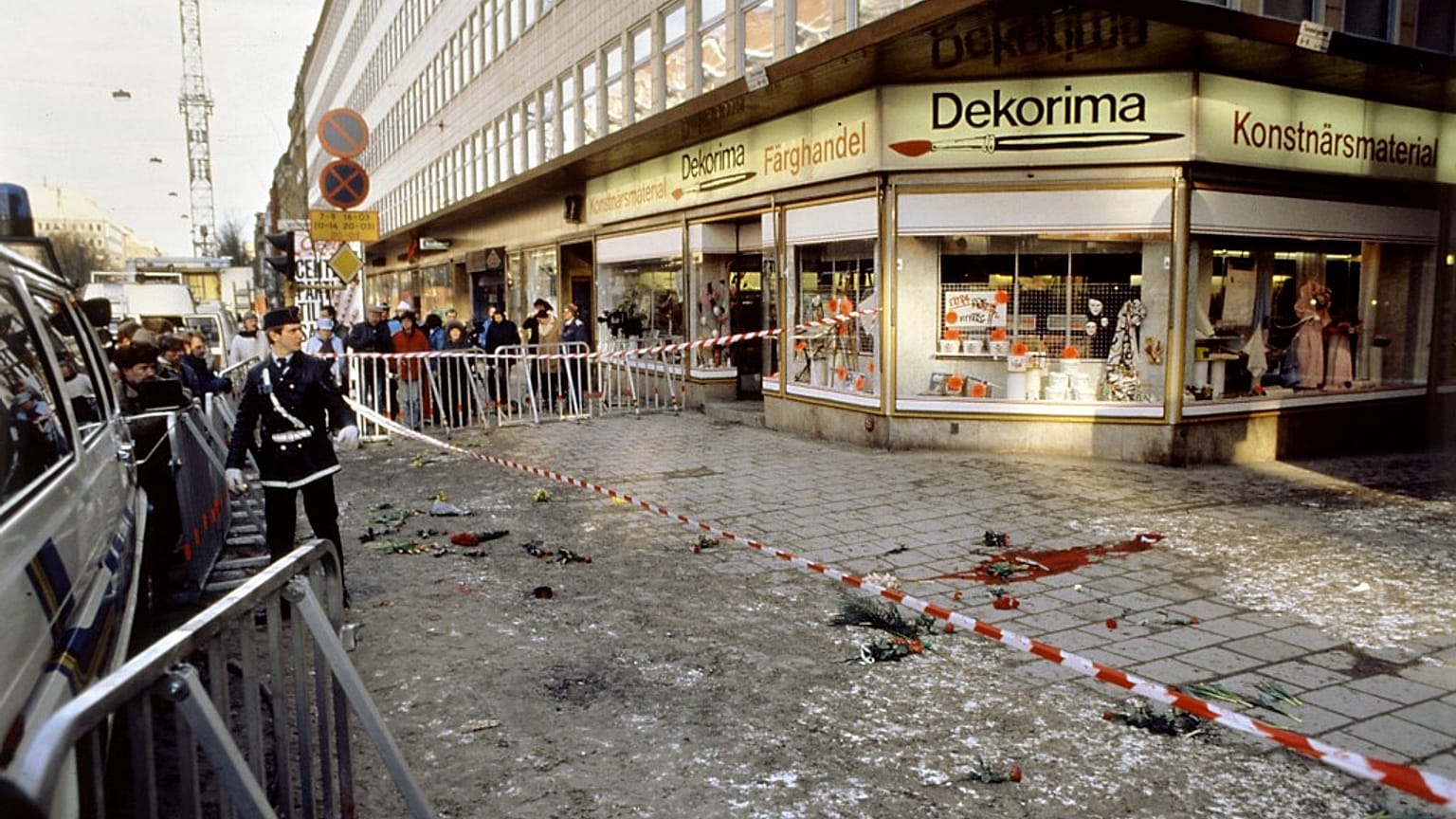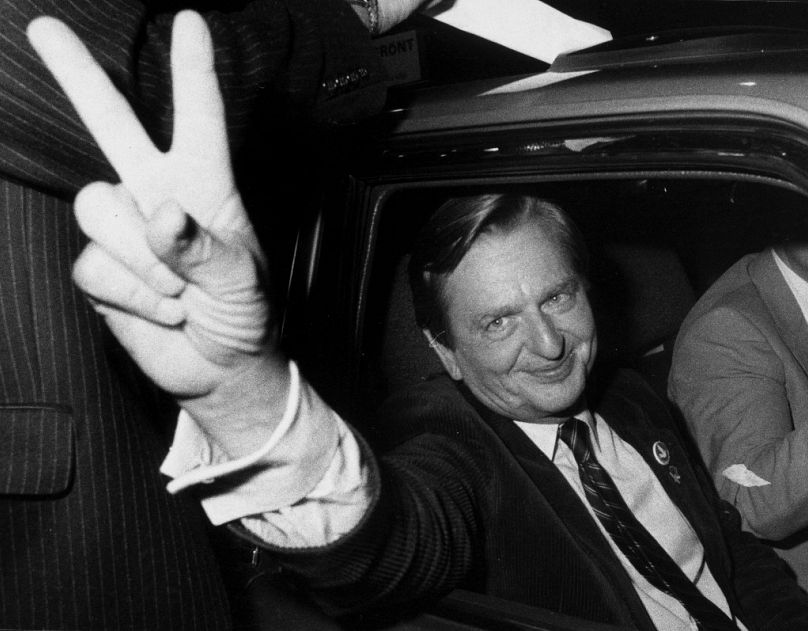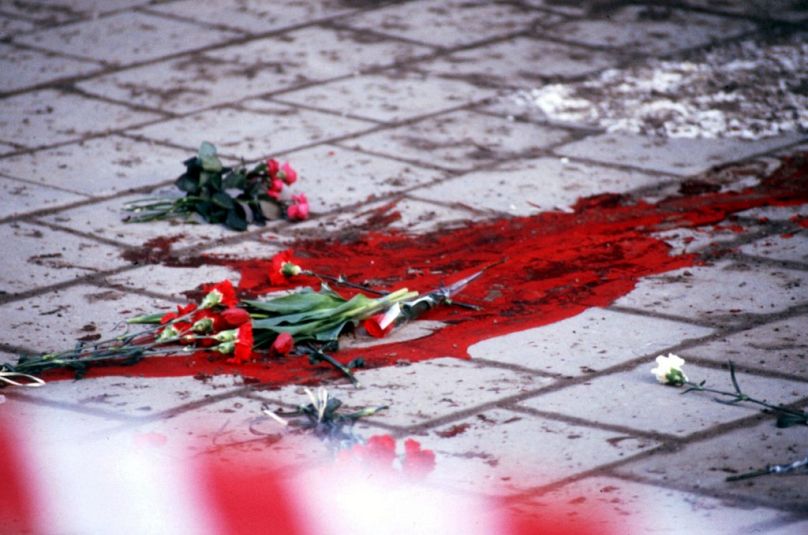Everyone from the CIA to the PKK to apartheid South Africa has been blamed for the murder of Sweden's most popular leader. The answer may be a lot more simple.
 ADVERTISEMENT
ADVERTISEMENT
On 28 February 1986, Swedish Prime Minister Olof Palme was gunned down in the street outside a cinema in Stockholm after taking in a movie with his wife and son.
His killer was never found.
Palme, who led Sweden from 1969 to 1976 and 1982 until his death, was a divisive figure who was not short of enemies. An outspoken critic of the US war in Vietnam and supporter of Fidel Castro’s Cuba, he favoured the expansion and extension of Sweden’s welfare state.
Even 35 years since the murder, the question of who was responsible divides Sweden. Many blame the CIA, others the Kurdistan Workers’ Party (PKK), and yet others the apartheid-era South African government, of which Palme was critical.
Dozens of books have been written, TV shows made, newspaper stories published and pronouncements made about the murder of one of Sweden’s most popular leaders. Over three decades, over 10,000 people have been questioned by Swedish police.
On 10 June 2020, Swedish police announced that their primary suspect was not a shadowy far-right cabal, foreign agents or Kurdish radicals but rather a graphic designer, Stig Engström, who was 52 at the time with a proclivity for booze and right-wing conspiracy stories.
Engström, known as ‘Skandia man’ because he had been working at the company’s offices near the cinema on the night of the murder, had been questioned by police in the late 1980s but dropped as a suspect. He had also come forward as a witness on the night of the murder, giving interviews to the Swedish media and criticising the police investigation.
The issue in June 2020 was that Engström was dead. As such, Swedish police investigator Krister Pettersson told the media that after 34 years the investigation into Palme’s murder was now closed. Pettersson said that he was “sure” that Engström was the killer.
The police findings tallied closely with those of another Pettersson, Thomas, who wrote a bestselling book, "The Unlikely Murderer", in 2018 that concludes that Engström most likely pulled the trigger. Pettersson’s book has now been made into a Netflix series of the same name, which began streaming across Europe on November 5.
Both Petterssons, the investigator and the author, have stopped short of saying categorically that Engström shot Palme. Although Krister Pettersson said he was “sure” Engström killed the Swedish leader, he pointed out that since he was dead there was no way of interviewing him or starting proceedings. The case had been “discontinued”, not “solved”.
Thomas Petersson, meanwhile, when asked whether he was 100% sure that Engström killed Palme that night in 1986, told Euronews: “I don’t have any doubt.”
“I have very little doubt,” he clarified.
Netflix qualifies in the very first frame of its five-part series that it is "based on an unsolved crime" but then cuts to a shot of Engström - played by Swedish actor and comedian Robert Gustafsson - holding a gun and standing over Olof Palme’s lifeless body.
There will be no doubt for those watching the series that Engström was the killer.
Unsurprisingly, the series has not gone down well with the Engström-sceptics, especially those like author Jan Stocklassa, who has spent years researching the Palme murder and published another best-seller on the case, The Man Who Played With Fire.
“In one word,” Stocklassa told Euronews when asked about the Netflix show, “it is deceitful.”
The main issue Stocklassa has with the Netflix show -- which he admits is beautifully produced and has a fantastic cast, especially Robert Gustafsson -- is that it in many respects it is an unequivocally accurate portrayal of exactly what happened. As such, it is absolutely believable - and yet, in showing Engström as the killer it goes far too far.
“It is so close to reality, in many many ways [...] Anybody watching this is going to think: ‘Well if most of this is true, then all of it is true - which is not the case,” he said.
Netflix did not reply to requests for comment to Euronews.
One of the things that the Netflix series did get right - and the one thing that everyone in Sweden agrees on - is that the police investigation was an unmitigated failure.
On the night of the killing, the crime scene wasn’t secured and members of the public traipsed through the snow to lay flowers, meaning no footprints could be found. One of the bullets fired by the killer -- who took a shot at Palme’s wife, Lisbeth, but missed and grazed her back -- was not found until two days later by a passing member of the public.
'How could they have missed it?'
The first chief investigator, Hans Holmer, was ultimately booted off the case in disgrace in 1987 and the two men that replaced him lasted less than a year. In 1989, another Pettersson - Christer Pettersson - was convicted for the murder but then released on appeal in 1989 when it emerged that police had uncovered neither a motive nor a murder weapon.
Even in 2020, Stocklassa said, the investigators revealing that Engström was the prime suspect unveiled no new evidence. If what they had was enough to name Engström as the killer in 2020, then why wasn’t it enough to arrest and convict him in the 1980s?
“Those who believed that Skandia man [was the killer] were waiting for this moment, for conclusive evidence, and there was absolutely nothing,” Stocklassa said.
Pettersson -- Thomas, that is -- was one of the disappointed. All these years he had assumed that the investigators must have had a good reason -- a key piece of evidence -- for not arresting Engström between 1986 and his death in 2000. Now he know that they didn’t, and yet Engström was never taken seriously as a suspect.
“How could they have missed it?” he said.
As for criticism of the Netflix series, Pettersson said that it is a fictionalised account of his book, not fact, and he believed that viewers “are smart enough to know the difference”.
He doesn’t think that either his work or Netflix will solve the case in the minds of Swedes, Far from it, it will lead to more debate, more investigation, more conclusions. As it should be.
“I’ve got no need to convince people he was the killer, I want to tell the story,” he said. “People can make their own minds up.”
Every weekday, Uncovering Europe brings you a European story that goes beyond the headlines. Download the Euronews app to get a daily alert for this and other breaking news notifications. It's available on Apple and Android devices.















